A knife is a very powerful weapon and can really go a long way toward stacking the odds in your favor. Whether you are facing someone bigger and stronger than you, or facing multiple opponents, a knife makes it possible for you to do more damage with less work than is required with your bare hands alone.
That is why a weapon is called a “force multiplier.” It is like a lever, amplifying the force of human effort.
In our previous issue we also discussed the fact that carrying a knife doesn’t make you special. Everybody and his uncle has a knife.
They’re easy to get and they’re easy to carry.
Given this, it makes sense to carry a knife. As long as you can do so legally, you are almost obligated to have a good blade on hand.
Why wouldn’t you? It takes no real effort except rearranging your pockets, and it needn’t cost you more than $40 to $50 USD for a good-quality, name-brand tactical folding knife.
As we discussed before, my new favorite pocket knife (and also a favorite of the Navy SEALS) is the Kershaw Emerson designed CQC-7.

There are some basic guidelines for knife handling …
Follow these guidelines and tailor them to your specific needs, your specific mode of dress, and how you conduct yourself on a day to day basis. Everybody’s situation is different.
What is the perfect combination of knife, clothing, and deployment for me will be different for you, and so on.
Let’s get into it …
** Carry Close to Center …
This will depend on the features of your knife. With the Emerson Wave feature of the CQC series of knives for example — it’s made to be clipped towards the rear of your pocket so that you can deploy the blade by simply drawing the knife out of your pocket …
All other pocket clip knives, carry it as close to the centerline of your body as possible. This means that if you do clip it to your pocket, don’t clip it to the rear of the pocket. Clip it toward the front.
When you are positioning any knife, the closer it is to the centerline of the body, at the front (not the back), the more easily you can grab it and draw it.
If you want to prove this fact to yourself, just lay your hands in front of your body as naturally as you can. You’ll find your arms tend to lay across your waistline at angles to each other.
These are, coincidentally, the same angles that the two portions of an ergonomic keyboard employ — because that’s how your arms fold naturally. They don’t sit straight forward unless you force them to.
With your knife as close to the centerline as possible, you can more easily drop your hands to the waistband area in order to find it, whether that means drawing it from the front of the pocket or from anywhere else.
This brings us to the actual deployment of the knife. You have your knife; you selected a good one; it is now carried by you, consistently and discreetly, day in and day out.
** So what happens when time comes to draw it?
Understand first that to deploy a knife is to do two things.
First, it escalates the encounter to a lethal force scenario unless you have reason to believe your life is in danger. This means you cannot deploy your life unless you believe it is needed to save your life or the life of someone else. It is a weapon with the power to kill. If nobody is trying to kill you, you do not have justification to introduce it.
Second, your knife can be a target in a fight. If you fixate on the knife, if you are thinking about “knife fighting” and not simply “fighting the other guy while you happen to have a knife,” you may be distracted and your opponent may try to attack or even take away your knife.
The thing to do, then, is to protect your knife. That may sound silly to you. You may be thinking, “My knife is here to protect ME, isn’t it?” Well, it is… but there is a right way to deploy it.
Never deploy your knife in such a way that the opponent can get his hand on it and snatch it away from you. Typically this would be when you are clinched up and grappling with somebody, on your feet or even on the ground. You need to keep your side with the knife on it away from the opponent. That means turning that side of your body away, or protecting that side with your other hand.
When you make the decision to go for your knife, you protect the side of your body that the knife is one. Slap the knife with your strong side (your weapon hand) so that you can make sure it is where it’s supposed to be. (If it shifts around a little in your pocket or wherever you keep it, this is how you’ll ascertain where it is. Daily carry of a knife is never perfect. Sometimes they move and we forget about them.)
Once you have slapped the knife, again while protecting that side, get your hand down deep on the knife and deploy it, either by pulling it out of the pocket or yanking it out of its sheath. While it’s still low against your body is the time to deploy the blade (if it’s a folding knife).
From here, use your knife to protect the rest of you. Put the strong side, with the blade, in front, and the rest of your body behind that. Keep the knife low and continue to protect it.
From here you can execute basic attacks and defenses while you wield your knife. (We’ll get into that in an upcoming issue, in fact.)
Deploying a knife basically says to everyone in the area, “I believe I am in fear for my life and I am prepared to initiate lethal force to preempt the threat.”
If these conditions aren’t met, don’t deploy the knife. You must be legally and morally justified before you use a weapon in an altercation.
A knife is a powerful weapon and should be respected as such.


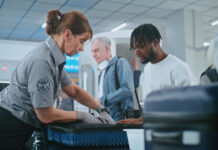

![How Many Shots Will It Take? [Video]](/wp-content/uploads/2025/06/Depositphotos_2724272_S-218x150.jpg)





![What Level Holster Should You Be Using? [Video]](/wp-content/uploads/2024/04/Depositphotos_44548439_S-218x150.jpg)

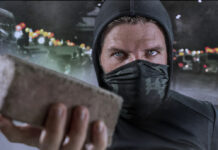
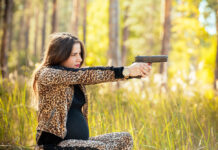
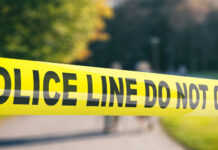
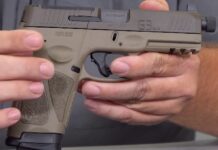


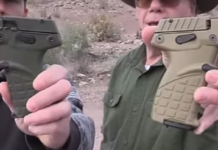












![Optic Ready vs Milled slides? [Video]](/wp-content/uploads/2024/02/image-3-100x70.png)
![[Checklist] What Gear You Need To Take Pistol, Rifle & Shotgun Training Courses [Video]](/wp-content/uploads/2023/07/Depositphotos_275087632_L-100x70.jpg)
![What is in Carter’s 2023 EDC? [Video]](/wp-content/uploads/2023/07/Depositphotos_146856137_L-100x70.jpg)


